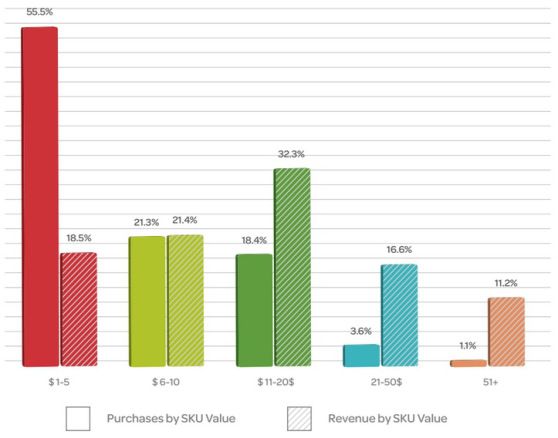When it comes to mobile gaming, there are millions of players out there playing every day, with the top games boasting hundreds of millions of monthly players. However, when it comes to actual spending in said games, there’s a steady decline that shows no signs of increasing.
A study across millions of gamers by mobile-marketing automation firm Swrve indicates that players who pay for items in mobile games are continuing to drop, down from 1.5 percent earlier in the year to 1.35 percent in July.
Speaking with GamesBeat, Swrve chief strategy officer Hugh Reynolds and Swrve CEO Christopher Dean explained that 62 percent of all mobile game revenues come from approximately 0.13 percent of all players. Considering the immense growth of the mobile gaming market in general, that’s a shocking number. And to some, maybe a harsh wake-up call, since most developers rely on purchases in free-to-play titles to make ends meet.
“This shows how game companies are dependent on a small group of people who are paying the bills,” said Reynolds. He also pointed out that more consideration should go the way of new users, especially considering that a great number of them don’t provide any given revenue to the game.
Within those numbers, approximately 18.4 percent of unit sales and 32.3 percent of revenue are split with the $10 to $20 that’s spent on a monthly basis. Those numbers are actually increased from earlier in the year, where they sat at 8.2 percent and 22.4 percent, respectively.
The monthly average spent on an app, for those who do invest, is $24.93, which is nearly a $3 increase from back in January. The average player does usually invest about three times a month, with each purchase around $8.35 a pop.

Out of all paying gamers, approximately 50 percent only make one key purchase a month, while a much lower 16 percent invest five times or higher in purchases.
“These findings stress once again just how important it is to consider retention and conversion — rather than simply acquisition — when it comes to building a successful mobile business,” said Dean. “With such a significant percentage of revenues coming from a small base, it is essential to both attempt to increase that number with smart in-game campaigns but also identify your most important players and personalize their experience.
“One interesting finding was the growth in ‘mid-tier’ SKUs [stock-keeping units]. The data suggest that users are more willing than ever before to make relatively significant one-off in-app purchases in mobile and that developers should start to consider this type of purchase as core to their business.”
Reynolds concluded, “You have to identify the people who generate revenues, understand those people, build a relationship with them, and give them the marketing campaigns and user experience that they expect.”
Source: VentureBeat

